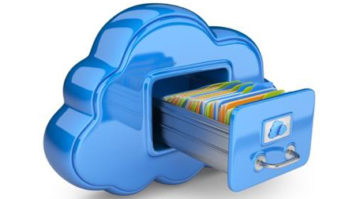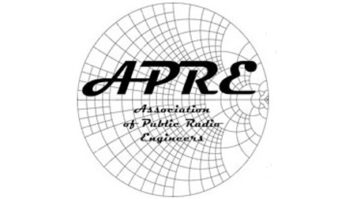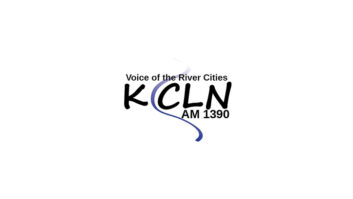WASHINGTON — More U.S. radio stations can soon begin saving on file cabinet space as a second wave of broadcasters moves to the FCC’s online public file system.
There have been some growing pains to date with the rollout of the cloud-based system for radio broadcasters, but most observers say the program is performing as expected.
The Online Public Inspection File or OPIF is being phased in and to date has replaced the Broadcast Public Inspection File process at radio stations with five or more full-time employees in the top 50 Nielsen markets. For most, that transition was completed by December 2016, according to the FCC; the TV industry transitioned earlier.
Beginning March 1, the next radio wave goes online. That’s when non-commercial stations, commercial stations in the top 50 Nielsen Audio markets with fewer than five full-time employees, and all commercial stations outside the top 50 markets must begin placing new public and political file materials in the online database.
This group also must preload all existing public file documents that pertain to the current broadcast license term, including Quarterly Issues Programs Lists, Annual EEO Public Inspection File Reports and Time Brokerage or Joint Sales Agreements. There is no six-month grace period, as there was for the first wave when they transitioned to the cloud.
Political file material that exists as of the transition date can remain at the station until the two-year retention period expires, according to the FCC, but newly created radio station political file material must be uploaded to the online public file.
SOME BURPS
Anecdotal evidence collected from several station operators point to several outages of the FCC public file upload site, which they said had at times delayed participants uploading documents. The commission says such instances have been infrequent. It acknowledged an outage during a “small window in mid-December 2017.” Otherwise, the FCC described feedback as “generally positive” in regards to shifting online.

Image shows the successful upload of a quarterly issues programs list for TV station WOST in Mayaguez, Puerto Rico. Some users have reported upload problems in the process, though the FCC says complaints have been few. One attorney recommends capturing screenshots as proof that documents were uploaded on time.
“After learning the interface, radio broadcasters have told us that they find the system easy to use,” a commission spokesperson said. “The FCC does have a help desk available for radio broadcasters having issues.”
Some observers have expressed concern about the FCC technical system’s capacity to host the online public files of so many new entities; the commission says it is confident the cloud-based system will handle the influx of new online participants.
Several major radio groups contacted by Radio World declined an invitation to comment on their experiences with the system. The National Association of Broadcasters said it was unaware of concerns among radio members regarding the online public file input system.
Radio stations transitioning March 1 may elect to start early, according to the FCC, and are encouraged to do so.
“Our advice is not to wait until Feb. 28 to start uploading existing material,” an FCC spokesperson said. “The system is user-friendly, but the one-time transition of existing materials can take some time. We also encourage users to review the filing materials on the online file website.”
Once a station transitions to the online public file, it must provide a link to the new online public inspection file from the home page of the station’s website, if it has one, as part of new public file requirements.
The FCC also has a sub-page designed to help people get started and walk them through the process, the spokesperson said, starting with how to obtain the pass codes that will enable the licensee to access the OPIF system. Online folders are provided on the site for all components of the public file broadcasters need to provide. All documents uploaded to the FCC broadcast public inspection files system are scanned for viruses and then converted to PDF for public viewing.
SAVE A SCREEN
Melody Virtue, a principal with Garvey Schubert Barer in Washington, said a few of her clients have reported having uploaded documents “disappearing.” She recommends capturing screenshots as proof documents have been uploaded on time.
“The system does get slow, particularly when everyone is trying to upload documents around the same time, which is 10 days after the end of a quarter,” Virtue said. “In addition, the history feature for uploaded documents on the public side misses a lot of uploads, so that is not reliable as a means of trying to find out where a document might have been mistakenly filed in the wrong folder.”
Virtue said most of her firm’s broadcast clients seem to prefer the online public file once they get used to it. “It is a lot easier to maintain. The down side is that stations must be timely or they will need to explain late uploads in their license renewal applications.”
Communications attorney John Garziglia of Womble Bond Dickinson (U.S.) said his clients seem satisfied with the online transition.
“My advice to broadcasters has been that the most difficult portion is using the licensee’s FRN [FCC registration number] and password to obtain the separate log-in to the online public file. Once the separate log-in is established, everything else is pretty much self-explanatory,” Garziglia said.
State broadcaster associations across the country have been active in providing training on the online interface, said Scott Flick, communications attorney with Pillsbury Winthrop Shaw Pittman LLP in Washington.
“What we have been hearing most about are stations having difficulty logging into the FCC’s system to upload documents, as opposed to complaints about the volume of documents to be uploaded,” Flick said.
Flick described the FCC’s online public file database as “not particularly intuitive,” which can leave some confused by the log-in process. He recommends checking with the appropriate state broadcaster association for further assistance.
Communications attorney David Oxenford noted on his Broadcast Law Blog that the FCC will grant waivers to some small stations — especially in rural areas where Internet access is limited — who may have trouble in complying with the new rules. The commission will entertain waiver requests, but any waiver that is granted will only be for a limited period of time of no more than two years, at which time the station will either need to comply or obtain another waiver, according to the FCC. The commission adds that the longer a radio station waits to file a waiver request the less likely a waiver request will be resolved by the deadline.
For example, Patrick Pfeiffer, VP/GM of KSJB(AM) and KSJZ(FM) in Jamestown, N.D., requested a waiver citing “resource limitations and a lack of corporate infrastructure and support staff” at the radio stations he runs.
“We have no HR director, business manager or IT specialist. I should add, as a 53-year-old individual, I am far from technically savvy or proficient … uploading ongoing content to the online public file would fall on me,” Pfeiffer wrote in his waiver request.
He continued, “This would take enormous amounts of time that would require me to divert attention from all my other essential duties.”
The FCC would not disclose whether it granted Pfeiffer’s request.
A complete list of items required to be filed online in the public file is listed on the FCC website. However, one thing radio broadcasters don’t need to file online is letters from the public.
Radio isn’t the first to make the transition to the online public file database. The FCC says broadcast television completed its transition to the online interface in 2014.












